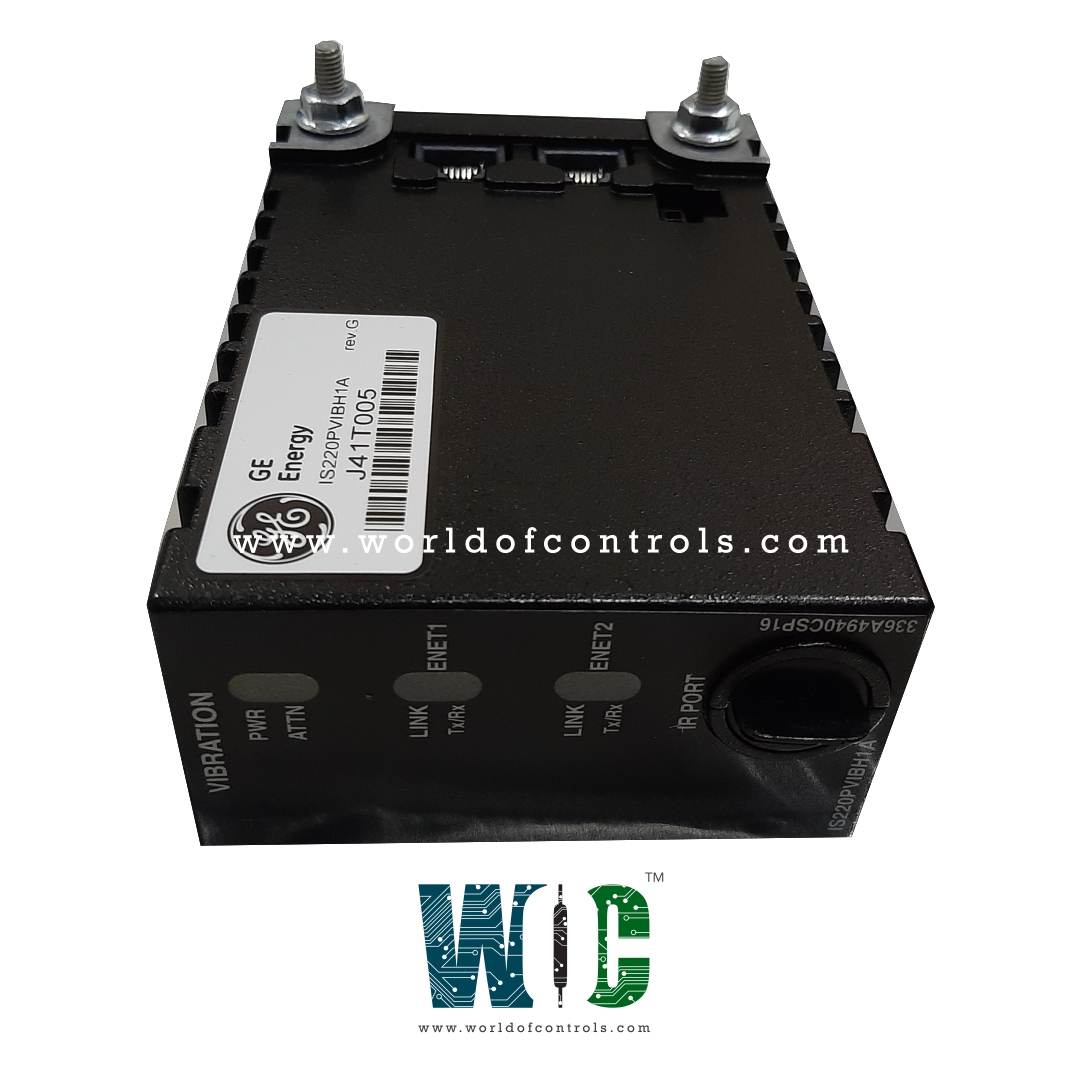
World Of Controls understands the criticality of your requirement and works towards reducing the lead time as much as possible.
IS220PVIBH1A REV H - Vibration Monitor Board is available in stock which ships the same day.
IS220PVIBH1A REV H - Vibration Monitor Board comes in UNUSED as well as REBUILT condition.
To avail our best deals for IS220PVIBH1A REV H - Vibration Monitor Board, contact us and we will get back to you within 24 hours.
SPECIFICATIONS:
Part Number: IS220PVIBH1A REV H
Manufacturer: General Electric
Series: Mark VIe
Function: Vibration Monitor Board
Number of Channels: 12
Thermocouple Types: E, J, K, S
Common Mode Voltage: +5 Volts
Normal Mode Rejection: 250mV
Operating temperature: -30 to 65 °C
Size: 8.26 cm wide x 4.19 cm
Technology: Surface Mount
Repair: 3-7 Day
Availability: In Stock
Country of Origin: United States
Manual: GEH-6721G
FUNCTIONAL DESCRIPTION:
IS220PVIBH1A REV H is a Vibration Monitor Board manufactured and designed by General Electric as part of the Mark VIe Series used in GE Distributed Control Systems. The Vibration Monitor Pack provides the electrical interface between one or two I/O Ethernet networks and the TVBA vibration terminal board. The pack contains a processor board common to all Mark VIe distributed I/O packs an acquisition board and a daughter board. The pack uses channels 1 through 8 to read vibration are proximity information from the following sensor types. Proximitor accelerometers with integrated output (Channels 1 - 3 only) Channels 9 through 12 only support proximitor and channel 13 can input either a key phasor signal type. Input to the pack is through dual RJ45 Ethernet Connectors and a 3-pin input. The PVIB supports Dual Ethernet networks for frame rates slower than 100 Hz. It supports a single ethernet network for frame rates of 3.125, 6.25, 12.5, and 100 Hz. Output is through a DC-37 pin connector that connects directly with the associated terminal board connector.
INSTALLATION:
Securely mount the desired terminal board Directly plug one PVIB I/O pack for simplex or three PVIB I/O packs for TMR into the terminal board connectors. Mechanically secure the packs using the threaded studs adjacent through the Ethernet ports. The studs slide into a mounting packet specified to the terminal board type. Plug in one or two Ethernet cables depending on the system configuration. The pack will operate over either port. If dual connections are used the standard practice is to connect ENET1 to the network associated with the R controller.
Apply power to the pack by plugging it into the connector on the side of the pack. It is not necessary to insert the connector with the power removed from the cable as the I/O pack has inherent soft-start capability that controls current in rush on power application.
OPERATION:
The processor board connects to an acquisition board specific to the I/O pack function. Upon application of input power, the soft-start circuit ramps up the voltage available on the processor board. The local power supplies are sequenced, and the processor reset is removed. The processor completes self-test routines and then loads application code specific to the I/O pack type from flash memory. The application code reads board ID information to ensure the correct matching of the application code, acquisition board, and terminal board. With a good match, the processor attempts to establish Ethernet communications, starting with requesting a network address. The address request uses the industry standard dynamic host configuration protocol (DHCP) and the unique identification read from the terminal board. After Ethernet initialization, the processor programs the on-board logic, runs the application and enables the acquisition board to begin operation.
WOC has the largest stock of GE Distributed Control System Replacement Parts. We can also repair your faulty boards. WORLD OF CONTROLS can also supply unused and rebuilt backed-up with a warranty. Our team of experts is available round the clock to support your OEM needs. Our team of experts at WOC is happy to assist you with any of your automation requirements. For pricing and availability on any parts and repairs, kindly contact our team by phone or email.
How does a vibration monitor board work?
The board uses sensors such as accelerometers to detect vibrations. These sensors convert mechanical motion into electrical signals. The board then processes these signals to analyze vibration frequency, amplitude, and other characteristics. Users can access this data to monitor equipment health and detect abnormalities.
Can a vibration monitor board be integrated with other systems?
Vibration monitor boards often support integration with other systems such as industrial control systems, SCADA (Supervisory Control and Data Acquisition) systems, or IoT (Internet of Things) platforms for comprehensive monitoring and analysis.
Where can I purchase a vibration monitor board?
You can purchase a vibration monitor board from WOC (World of Controls). WOC is a supplier of industrial automation and control products, including vibration monitoring equipment. You can visit their website or contact them directly to inquire about their range of vibration monitor boards and make a purchase.